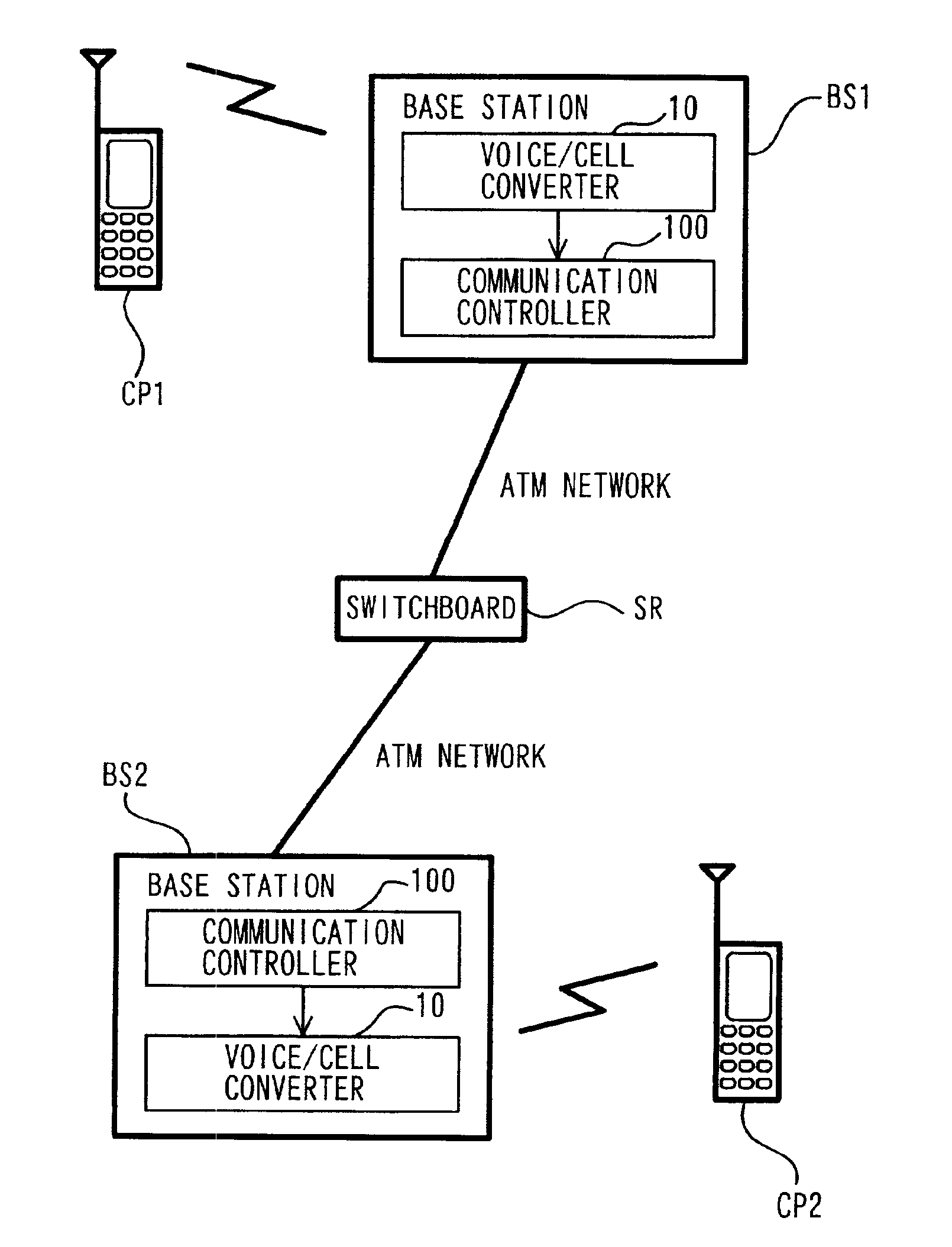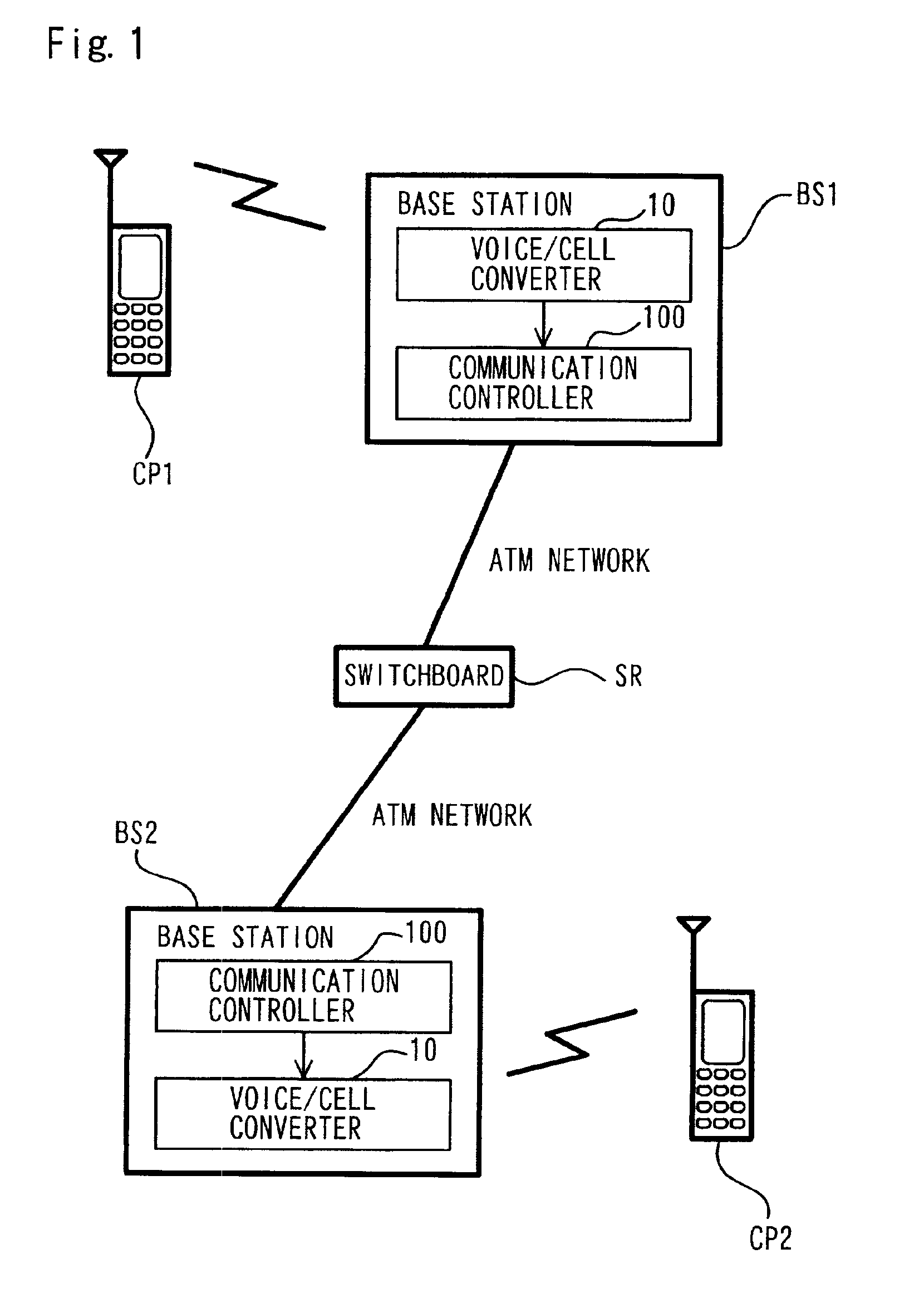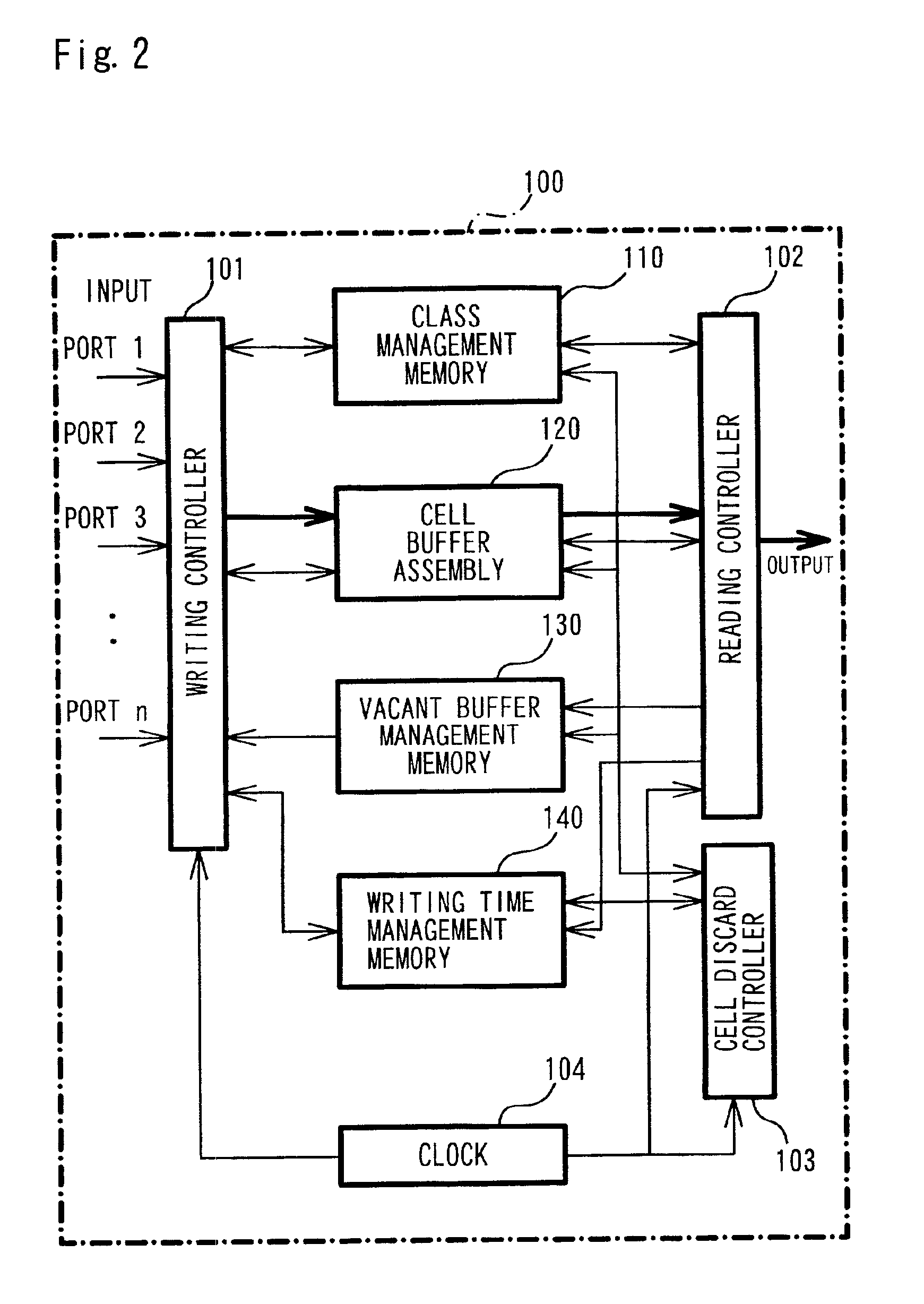Communication control system
- Summary
- Abstract
- Description
- Claims
- Application Information
AI Technical Summary
Benefits of technology
Problems solved by technology
Method used
Image
Examples
Embodiment Construction
[0041]A mode of carrying out the present invention is discussed below as one embodiment in the following sequence:[0042]A. Configuration of System[0043]B. Communication Control Process[0044]B1. Writing Control Process[0045]B2. Reading Control Process[0046]B3. Cell Discard Control Process[0047]B4. Modification of Cell Discard Control Process
[0048]A. Configuration of System
[0049]FIG. 1 schematically illustrates the configuration of a communication system in one embodiment of the present invention. The illustration regards the configuration in the case of voice communication between cellular phones CP1 and CP2. Audio signals input into the cellular phone CP1 are transmitted to a base station BS1 by wireless. The base station BS1 is capable of simultaneously communicating with a plurality of cellular phones. Each cellular phone is mapped to each input port on the base station BS1 for communication.
[0050]The base station BS1 has a voice / cell converter 10 and a communication controller 10...
PUM
 Login to View More
Login to View More Abstract
Description
Claims
Application Information
 Login to View More
Login to View More - R&D
- Intellectual Property
- Life Sciences
- Materials
- Tech Scout
- Unparalleled Data Quality
- Higher Quality Content
- 60% Fewer Hallucinations
Browse by: Latest US Patents, China's latest patents, Technical Efficacy Thesaurus, Application Domain, Technology Topic, Popular Technical Reports.
© 2025 PatSnap. All rights reserved.Legal|Privacy policy|Modern Slavery Act Transparency Statement|Sitemap|About US| Contact US: help@patsnap.com



